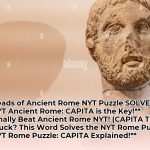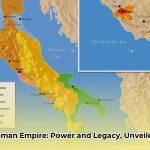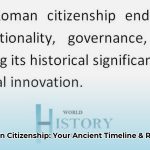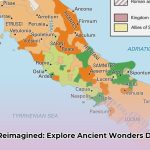Ever wondered how the Roman Empire achieved its monumental power and unprecedented territorial reach? Its success was not solely forged in military might or political acumen. The very landscape itself, with its intricate network of mountains, rivers, and seas, played a pivotal, often underestimated, role. Imagine the formidable Alps and Apennines, the winding Tiber River, and the expansive Mediterranean Sea as active, strategic components in Rome’s grand design. This article offers an exclusive, in-depth insight into how the ancient Roman Empire geography profoundly influenced military campaigns, inspired breathtaking architectural feats, fostered cultural integration, and even contributed to its eventual decline. Prepare to discover how these natural forces were not merely picturesque backdrops but dynamic shapers of Rome’s ascendancy and its lasting legacy that continues to resonate globally. From ingenious infrastructure marvels to critical strategic missteps, the narrative of Rome is intricately woven with its geographical fabric. You can explore a visual representation with this labeled Roman map.
The Geographic Blueprint of Roman Dominance: From Village to Empire
The Roman Empire, renowned for its sprawling territories and enduring global impact, owes much of its formative success to its strategic geographic positioning. Rome’s placement in the heart of the Italian Peninsula and the central Mediterranean basin was far from accidental; it was a calculated advantage that provided unique opportunities for growth and expansion. So, how did the strategic geography of Rome genuinely foster its formidable power for centuries?
Rome’s Foundational Advantages: Natural Defenses and Fertile Ground
Rome’s foundational story begins with an exceptionally advantageous position that directly addressed immediate needs and long-term security. Nestled along the Tiber River, approximately 16 miles inland from the Tyrrhenian Sea, the burgeoning city enjoyed immediate access to fresh water for its populace and fertile alluvial lands essential for agriculture. The Tiber’s valley created a large, cultivable area, ensuring a stable food supply—a critical factor for supporting a growing population and army. Furthermore, the river served as an early artery for trade and transportation, allowing easy movement upstream and downstream while also providing a natural defensive barrier against attacks from the east.
Adding to these benefits, the city’s unique construction upon seven distinct hills—including the Palatine, Capitoline, and Aventine—served as natural fortifications. These elevated positions offered inherent defensive benefits for the early settlement, granting its military a significant tactical edge during conflicts and protecting it from sea-based raids. Similarly, the imposing Apennine Mountains, running like a spine down the Italian Peninsula, and the towering Alps to the north functioned as formidable natural barriers. The Alps provided a challenging roadblock that forced potential invaders, such as Hannibal in the Second Punic War, to traverse narrow, punishing passages, allowing the Romans precious time to prepare and mobilize. The Apennines, dividing the peninsula, offered protection against invasion from the east, enabling Rome to focus its early defensive energies elsewhere. These initial Roman geographical advantages provided a vital buffer for growth, contributing significantly to Rome’s early survival and fostering its internal development amidst regional rivalries.
Mediterranean Mastery: The Empire’s Liquid Superhighway
As Rome progressively expanded beyond the confines of the Italian Peninsula, its broader geographical context became a decisive factor in its imperial trajectory. The empire eventually extended its vast Roman territories across parts of Europe, Africa, and Asia, a clear testament to the strategic importance of its central position within the Mediterranean world. One might reasonably conclude that geography profoundly shaped destiny for the Romans.
The Mediterranean Sea, rather than posing an obstacle, functioned as an efficient superhighway, linking the diverse regions of the burgeoning empire. Roman control of this vital waterway was paramount. Rome’s formidable navy, initially inspired by Phoenician shipbuilding, enabled unparalleled control over vital trade routes, facilitated the rapid deployment of its legions to distant provinces, and projected its military power across the entire region. Dominating the seas meant effectively controlling the flow of both essential goods (like grain from Egypt, wood from Gaul, and metals from Hispania) and geopolitical influence, a strategic advantage that few empires before or since could match. Their control of this liquid Roman frontier was unrivaled, guaranteeing economic prosperity and military supremacy that underpinned centuries of imperial rule.
Engineering Rome: Mastering the Landscape Through Innovation
Roman engineers were unparalleled masters of environmental adaptation, consistently overcoming geographical challenges through groundbreaking innovation and methodical construction. They erected an impressive array of roads, intricate aqueduct systems, and monumental public buildings that were instrumental in the empire’s communication, resource management, and overall cohesion. These Roman engineering achievements didn’t merely exist; they actively reshaped the landscape to serve the empire’s needs.
Unbreakable Foundations: The Concrete Revolution
Roman concrete, known as opus caementicium, represents a monumental leap in construction technology. This robust mix of lime, volcanic ash (pozzolana), and aggregate offered exceptional durability, particularly in marine environments, where it demonstrated remarkable hydraulic resistance. This ancient concrete, remarkably, in some instances, has outlasted modern materials for millennia, especially in underwater structures like harbor breakwaters. This pioneering capability revolutionized maritime construction, enabling the creation of robust harbors (e.g., at Ostia, Rome’s port city) and stable foundations for massive structures, vital for Rome’s naval power and extensive trade networks. The genius wasn’t just in the formula, but in their precise application of structural principles that allowed for unprecedented scale and longevity.
Paving an Empire: The Strategic Roman Road Network
The extensive road networks of Rome were far more than simple pathways; they served as strategic arteries for imperial administration, military logistics, and economic exchange. Roads like the Via Appia, the “Queen of Long Roads,” perfectly exemplify their meticulous, layered construction methodology: a foundation of small stones, followed by gravel, sand, and topped with large, tightly fitted paving slabs. Roman surveyors employed sophisticated instruments like the groma (for setting right angles) and the chorobates (a leveling tool) to ensure remarkable alignment, favoring direct routes that effortlessly surmounted natural barriers through ingenious bridges and tunnels. These military roads, spanning over 50,000 miles at the empire’s height, were designed for unparalleled longevity and maximum speed, enabling rapid troop movement, efficient communication, and the swift transport of goods across the immense Roman landscape.
Arching Towards Greatness: Structural Ingenuity of Aqueducts and Bridges
The arch was the fundamental structural element underpinning Roman bridges and magnificent aqueducts, facilitating expansive spans with unwavering stability. By masterfully distributing weight outwards to their foundations, these structures traversed vast valleys and wide rivers with remarkable ease, overcoming significant geographical challenges. Iconic examples like the Pont du Gard in southern France, a triple-tiered aqueduct bridge, and the Alcántara Bridge in Spain, renowned for its massive arches, showcase not only their profound functionality in supplying cities with fresh water but also an inherent aesthetic grace, demonstrating a sophisticated understanding of Roman infrastructure and hydraulics. These systems were critical for sustaining urban populations, public baths, and sanitation, directly impacting public health and quality of life.
Efficiency on Scale: Standardization and Construction Methods
Standardization was a driving force behind the efficiency and scale of Roman construction. Consistent brick sizes, such as the pentadoron (a five-palm-length brick), and uniform concrete facings—including opus incertum (irregular stone), opus reticulatum (net-like pattern), and opus testaceum (brickwork)—significantly expedited building processes. This systematic approach, combined with the Romans’ meticulous planning and organization, allowed for the rapid proliferation of cities, fortifications (like Hadrian’s Wall for defense), and sophisticated aqueducts across the immense Roman landscape, even in varied climates and terrains.
Conquering Terrain: Overcoming Complex Engineering Challenges
Even with their advanced techniques, Roman engineers encountered formidable challenges posed by diverse terrains. Tunnel construction, for instance, presented complex logistical and technical hurdles, especially when piercing mountains. The qanat strategy, adapted from older Persian methods, involved sinking vertical shafts at regular intervals along a tunnel path. These shafts served multiple purposes: aiding in initial surveying for proper alignment, facilitating excavation by allowing multiple work points, and ensuring crucial ventilation and spoil removal in underground passages. Imagine the precision required: counter-excavation in mountainous terrain demanded extremely accurate surveying to ensure two teams tunneling from opposite ends would meet in the middle. Such feats sometimes required years to complete, factoring in complex considerations like water management, varying rock types, and the sheer effort of manual labor. Their methodical approach and unwavering dedication to practicality were paramount in achieving these monumental Roman engineering achievements without modern machinery.
The Complexities of Romanization: Cultural Adaptation and Enduring Impact
Romanization, a cornerstone concept in ancient history, extended far beyond mere road construction and military conquest. It represented a comprehensive transformation of conquered territories, a profound cultural and political restructuring. How exactly did Romanization affect conquered peoples? It initiated a dynamic process of integration and, at times, considerable resistance, fundamentally altering local identities and political structures across the vast empire.
Cultural Transformation: Language, Law, and Urban Design
Upon conquest, Roman culture subtly, yet powerfully, began to reshape daily life in new provinces. Latin swiftly became the dominant language of governance, commerce, and authority across the empire, facilitating communication and administration, especially in the Western provinces. Roman law provided a sophisticated framework for justice and administration, promoting uniformity and order. Simultaneously, Roman cities, complete with characteristic forums, public baths, amphitheaters, and temples, dramatically reshaped the physical and social landscape. These urban centers became focal points for Roman cultural dissemination, encouraging local elites to adopt Roman dress, customs, and education. Was this a benevolent modernization or a subtle, yet profound, form of cultural imposition? The impact was undeniably transformative, laying the groundwork for many aspects of Western civilization.
Diverse Responses: Acceptance, Adaptation, and Resistance
Not all conquered populations embraced Roman culture with uniform enthusiasm, demonstrating the varied nature of Romanization. Regions like Gaul (modern France) and Hispania (modern Spain) largely adopted Roman customs and institutions with zeal, often seeing benefits in integration, such as access to trade, Roman citizenship, and a stable legal system. Conversely, the Eastern provinces, with their rich, established Hellenistic traditions and sophisticated urban centers (e.g., in Greece and Asia Minor), maintained a more distant relationship with Roman cultural norms, preserving much of their existing heritage and often continuing to use Greek as the lingua franca. This interplay highlights that Romanization was not a monolithic process but a complex tapestry of imposition, negotiation, and adaptation. Local deities sometimes merged with Roman counterparts (e.g., Celtic gods being associated with Roman ones), and existing local rulers occasionally retained their positions, indicating a flexible blend of Roman authority and local autonomy.
The Weight of Empire: Factors in Rome’s Decline and Enduring Lessons
Even a magnificent empire like Rome, seemingly invincible, could succumb to internal weaknesses and external pressures. The Western Roman Empire, despite its previous grandeur, was not immune to the forces that led to its eventual collapse. What critical mistakes led to the Roman decline? Overexpansion, for one, proved to be a double-edged sword. While it initially brought immense wealth and resources, it simultaneously stretched the empire’s capacities thin, making effective defense and governance incredibly challenging across vast distances. It’s akin to attempting to spread vital resources too thinly over an impossibly large area—eventually, critical areas simply don’t receive enough support, leading to cracks.
The Perils of Overexpansion: Stretched Resources and Defenses
The empire’s colossal geographical size made it exceedingly difficult to defend and govern with optimal efficiency. This overextension strained Roman resources to their breaking point, creating vulnerabilities that were increasingly exploited by external threats. Maintaining long frontiers, such as the Rhine and Danube rivers in Europe or Hadrian’s Wall in Britain (built to separate “un-Romanized” tribes), required immense military manpower and financial investment. The sheer distance from the capital to these distant Roman frontier regions meant slow communication, delayed responses to invasions, and a constant drain on imperial coffers. The need to garrison vast areas left core territories potentially under-defended, a key geographical challenge in its later stages.
Economic Strain and Internal Discord
Internal strife became a persistent feature of Roman politics, particularly during the Crisis of the Third Century. Political corruption festered, and a succession of often inept or short-lived leaders struggled to steer the ship of state effectively. The division of the empire into Western and Eastern halves by Diocletian in 285 CE, and later the permanent split after Theodosius I’s death, further diluted its collective strength. This division, much like a family splitting its inheritance, reduced the individual wealth and resources available to each half. With fractured resources and diverging priorities, the empire found it increasingly difficult to present a unified and resilient front against mounting challenges. The Roman economy also faced severe challenges, including crippling taxation to fund the military, rampant inflation that devalued its currency, and a heavy reliance on slave labor which arguably stifled innovation and productivity growth. Trade routes, once secure, became increasingly vulnerable due to external pressures and internal instability.
External Pressures: Relentless Barbarian Invasions
The relentless waves of barbarian migrations and direct invasions delivered the final, crippling blows to the Western Roman Empire. Tribes such as the Goths (Visigoths sacking Rome in 410 CE), Vandals (sacking Rome in 455 CE), and Huns launched persistent attacks across Roman territories, starkly exposing the empire’s military vulnerabilities along its overstretched borders. The once formidable Roman army struggled to contain these widespread incursions, much like a dam finally succumbing to the relentless pressure of burgeoning waters, unable to plug every geographically distant breach simultaneously. The loss of key provinces like North Africa to the Vandals, vital for grain supply, further exacerbated the empire’s economic woes.
The Role of Christianity: A Contentious Historical Debate
The impact of Christianity on the Roman Empire’s decline remains a highly contentious subject among historians. Did it systematically undermine traditional Roman values and civic duty by shifting loyalty from the state to the spiritual realm, thereby weakening imperial authority and cohesion, as some scholars like Edward Gibbon argued? Or did it perhaps offer a new form of stability and unity during a tumultuous era, providing a crucial unifying force amid widespread chaos, offering hope and a common identity to diverse populations within the Roman Empire, as modern historians often contend? The truth likely lies in a complex interplay, where Christianity both challenged and adapted to Roman structures, contributing to a profound cultural transformation during a period of immense change.
Enduring Legacy and Modern Insights from Roman Geography
Even in its fragmented state, Rome left an indelible mark. Its contributions to law, language (Latin as the root of Romance languages), and infrastructure continue to shape Western civilization, with many foundational principles still in use today. The concept of “Romanization” itself—the spread of Roman culture throughout its vast Roman territories—underscores the empire’s profound and lasting influence. Their sophisticated engineering and adaptable cultural ideals spread far and wide, demonstrating remarkable endurance.
The undeniable role of geography in Rome’s unprecedented success and ultimate decline offers invaluable lessons that resonate profoundly today. Understanding the intricate relationship the Romans forged with their natural environment provides crucial insight into their enduring place in history and the shaping of global societies.
Engaging with History: An Immersive Approach to Roman Geography
To truly grasp the profound impact of ancient Roman Empire geography, imagine directly engaging with its historical landscape through interactive digital tools. Picture exploring an interactive map, allowing you to zoom into crucial regions, scrutinize military campaigns as they unfolded across specific terrains, and analyze resource distribution patterns. It’s like being an archaeologist, digitally excavating the past and observing how geographical features dictated strategic choices. Consider scrolling through a dynamic timeline to observe how ingenious infrastructure projects—each new road or aqueduct—developed in tandem with the empire’s growth, revealing how human ingenuity subtly altered the course of history in response to natural constraints.
Such interactive elements offer a deeper, more personal connection to the past, making the complex interplay of human agency and Roman geographical challenges tangible and comprehensible.
Lessons for Today: Applying Roman Principles of Adaptation
What enduring insights can we glean from the multi-faceted rise and fall of Rome, particularly concerning its geographic relationship? Are there striking parallels with challenges facing contemporary societies? Political scientists frequently draw attention to issues like overextension of global influence, resource management, climate change’s impact on human settlements, escalating political polarization, and the pitfalls of ineffective governance as potential warning signs of societal strain.
Policymakers and planners today should therefore prioritize fostering social cohesion, implementing responsible resource management strategies that consider environmental limits, and maintaining robust, adaptable infrastructure. Just as Rome’s cumulative mistakes and inability to adapt to its vast geographical span contributed to its downfall, the decisions and actions we undertake today—especially regarding our relationship with the environment and global resources—will profoundly shape the future trajectory of our own societies. The most critical lesson, perhaps, is the paramount need for adaptability and resilience. A society incapable of evolving and adapting to shifting environmental and geopolitical circumstances risks repeating the errors of the past. Building a great civilization is one challenge; sustaining it with wisdom, foresight, and continuous adaptation to geographical influences and limitations is another, far greater one.
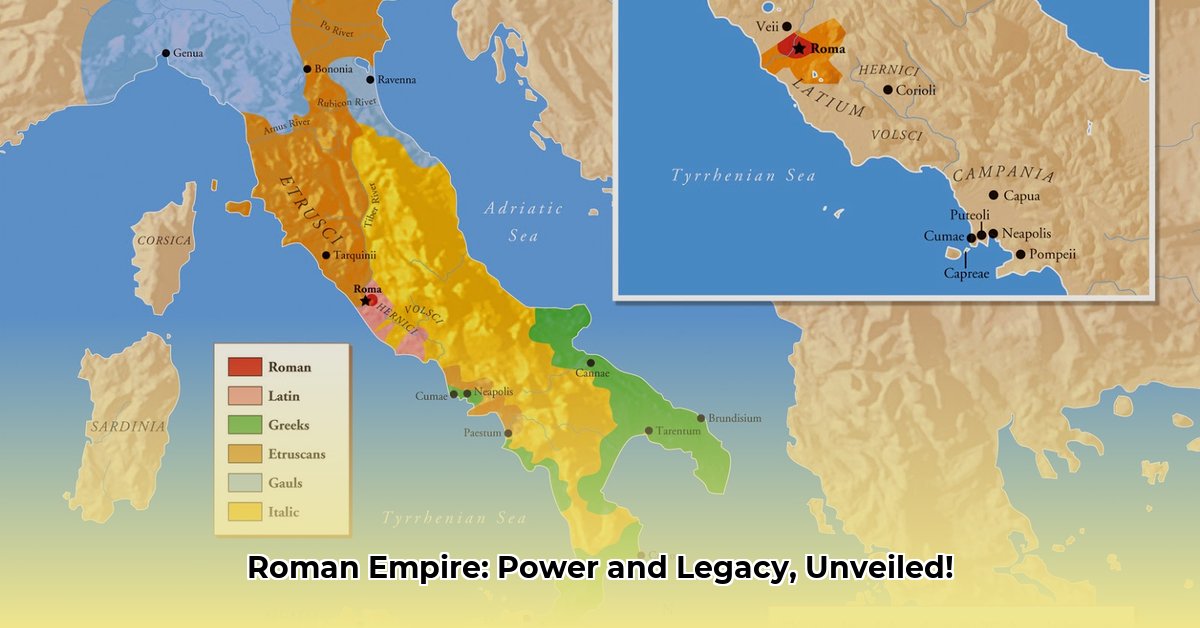

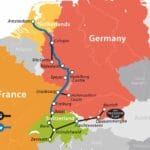
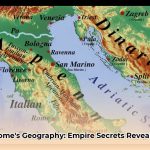
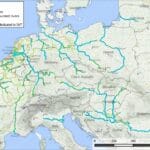
![Unearth Ancient City Map Rome: New Atlas For Urban Planners [Reference] city_map_ancient_rome_edited](https://www.lolaapp.com/wp-content/uploads/2025/08/city_map_ancient_rome_edited-150x150.jpg)



